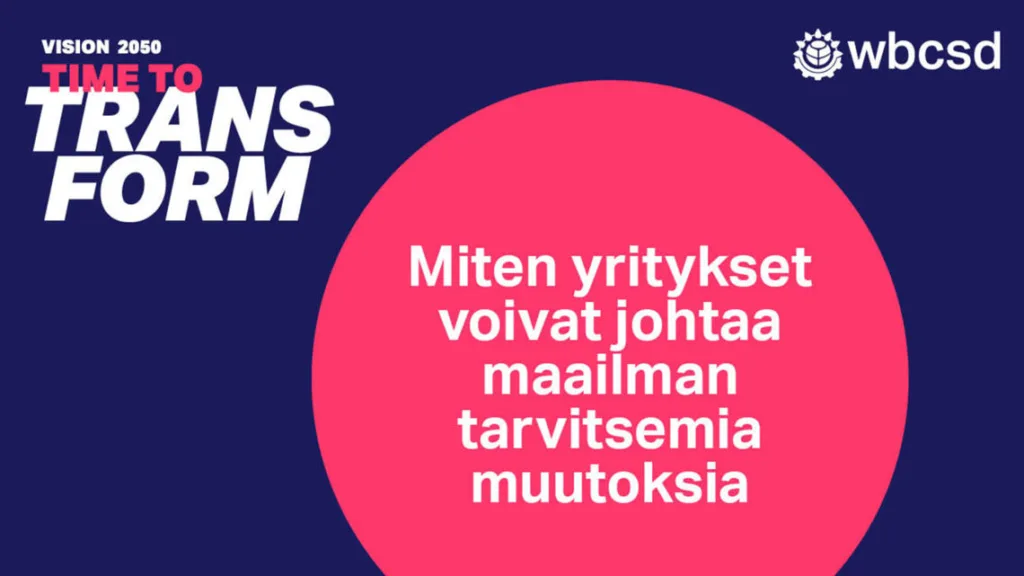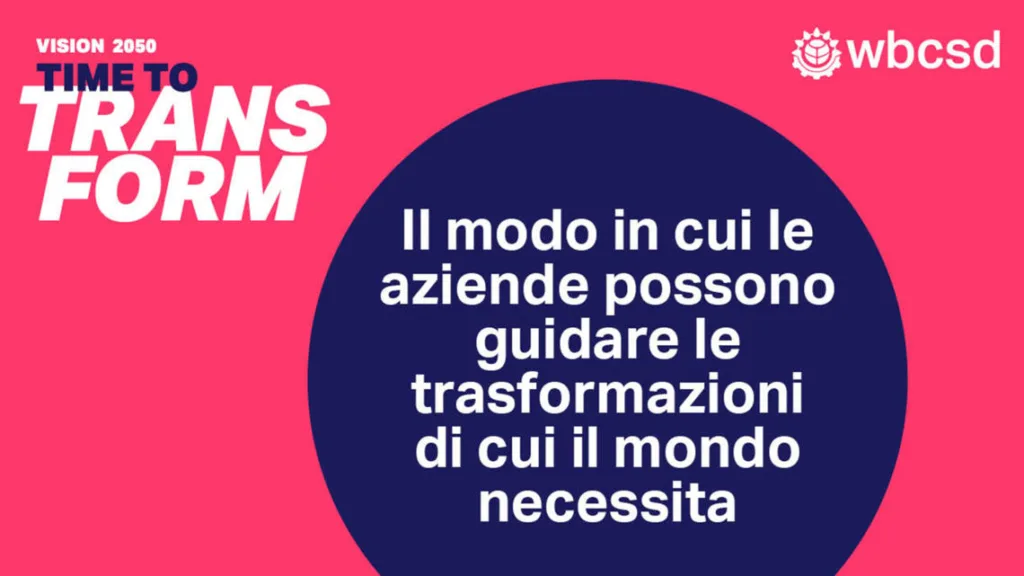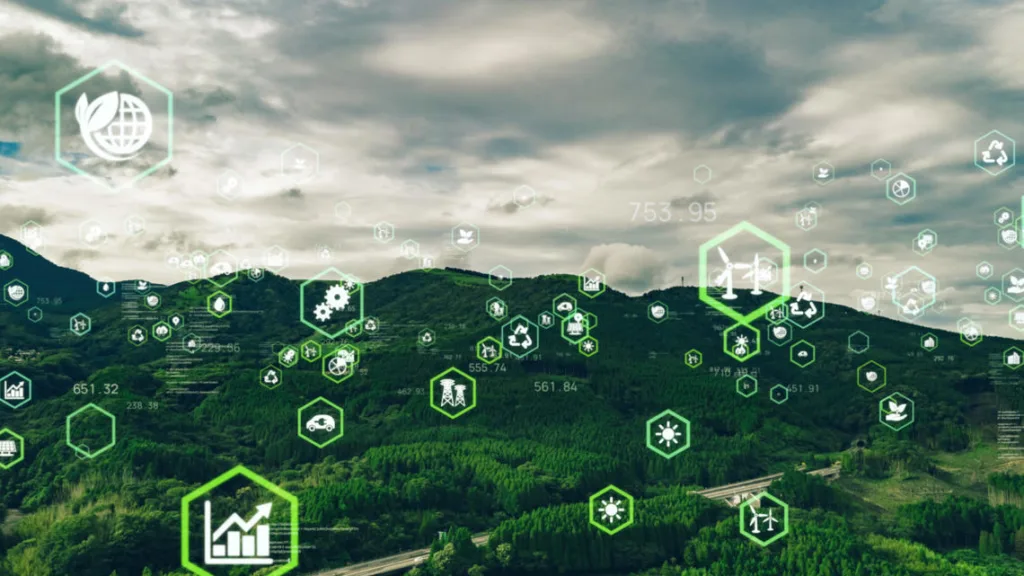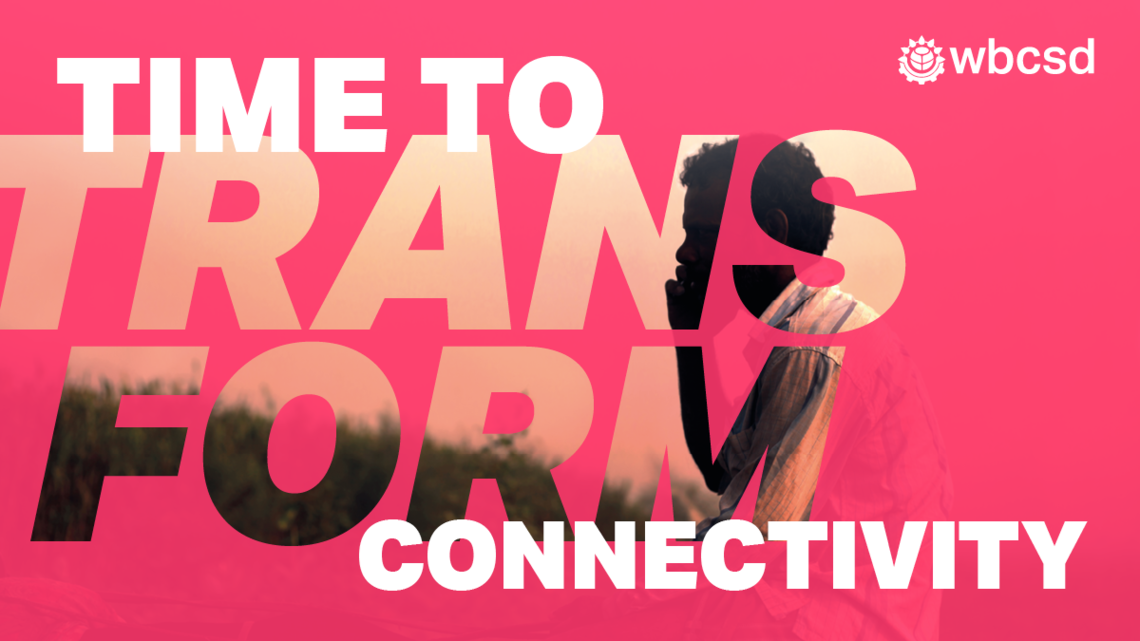Authors
Constant Van Aerschot
An interview with Mel Melis, Director, Interregional Engagement, Sustainability Unit, Fujitsu by Constant Van Aerschot, Director Asia Pacific, at the World Business Council for Sustainable Development (WBCSD)
A few months ago WBCSD launched an update to its Vision 2050, providing business with a framework for action in line with the urgency of the challenges that we face as global societies. Every few weeks, we’re taking a deeper look into a different part of Vision 2050’s framework, and I I‘m excited to be taking a deeper look into the Connectivity transformation pathway with Mel Melis, Director, Interregional Engagement, Sustainability Unit, from our member company Fujitsu.
Vision 2050’s Connectivity pathway focuses on the digital technologies and platforms that connect people to other people, to information, and to an ever-expanding range of products and services. Our vision for Connectivity is that “responsible connectivity brings people together, enhances transparency and efficiency, and drives access to opportunity.” The vision lays out how societal needs from connectivity will be met in 2050, requiring business to ensure that:
- Connectivity empowers everyone.
- Data optimizes performance and efficiency.
- Sustainable development can be tracked and managed.
- Connectivity respects people and the environment.
I recently spoke to Mel to talk about the central role that connectivity will play in enabling 9+ billion people to live well, within planetary boundaries, the transformational change that connectivity has already brought about, and what business still needs to do to ensure that connectivity can drive net-positive outcomes for society.
Mel, tell us a bit about the importance of connectivity in delivering Vision 2050 and some of the challenges that Vision 2050’s connectivity transformation pathway is seeking to addresses.
Firstly, it would be tempting to assume that this pathway is driven by technology and innovation that is ever-changing and that can be superseded, improved or rendered obsolete within months. But this isn’t fundamentally about technology, it’s about people. Connectivity is about feeling part of a community; opportunity; friendship. The pathway is centered on people and ensuring the innovations that connect people are safe to use, trusted, and don’t leave anyone behind. Technology should be an enabler of connection and community, for everyone.
The pandemic has made our world more volatile and fragile, and increased the inequality gap both within countries and between countries. Governments, businesses and NGOs have all had to act decisively, driving programs of change within weeks, which ordinarily would have taken years. There have been great waves of change in connectivity over the past fifteen months – we only need to look at areas such as healthcare and education to see how transformative these changes have been. Connectivity is an enabler in this story, but it is the people, and essential workers that have been at the heart of it, embracing change to keep delivering essential services to our communities.
Connectivity benefits our society when it is people-centered and supported by trusted data. As we mention in our Fujitsu Technology and Service Vision, the dynamics of the physical world can be projected in the digital space allowing us to make trusted, human centric decisions. And although it would have been better if we could have been with family and friends these last 18 months, for those of us lucky enough to live in a connected world, connectivity has allowed us to reach loved ones, colleagues, to conduct leisure and fitness activities in these difficult times.
What do you think business needs to do now to accelerate and scale connectivity?
The challenge for business now is to ensure that we don’t overstep, that we are human centric, that we don’t create ways of connecting which are elitist or difficult to access. “Living well” is central to Vision 2050: it means that “everyone’s dignity and rights are respected, basic needs are met, and equal opportunities are available for all”. Accessibility is therefore key, so we must shine a light on ourselves and our work as we build momentum around this agenda: what we develop must be easy to use, affordable, built without unconscious bias and not discriminate against vulnerable or protected groups. We are used to daily social interactions, in shops, banks, at the doctors – but these relationships may be changed forever. How can business and government work together to alleviate anxieties in an ever more digital world? And, how can we help to respect choice and privacy, so that not every choice citizens make needs to be made digitally?
Whether business delivers connectivity as a core service, or whether it is used to enable our business, we must be acutely aware of our responsibility, to help bridge chasms, not create new ones through opening new fractures in our already imbalanced world. Scale must also consider cultural norms in different countries and the infrastructure within them. Connectivity is not always one size fits all and that too is part of our responsibility to society.
Business should also consider the impact of new technologies on employees and operations, whether through Digital Transformation (DX) or Sustainability Transformation (SX). The most successful companies will be those that offer choice and hybrid working models. In Fujitsu, we call this “Work life shift”, a wellbeing-focused approach to borderless offices that offer the ability to work from anywhere, enabled by technology. This approach can be adopted by customers too, being agile and adaptive will help attract and retain talent, but also help customers achieve the same.
For us, these shifts are leading towards what we call B2E, “business to everyone”. As organizations, we have a responsibility to all our stakeholders, be they employees, suppliers, customers, partners, society, planet and shareholders. Business is not apart from society and connectivity has so many interdependencies and opportunities across many, if not all, of the other Vision 2050 pathways: Energy, Living Spaces, Transport & Mobility, and Health & Wellbeing are prime examples.
Can you tell us a little about how WBCSD is helping business to act on this pathway?
Launching Vision 2050 during the pandemic was a timely reminder of the vulnerabilities of our planet and global society and the responsibilities of business as being part of the solution. That is why WBCSD is helping to bring together purpose-driven organizations to deliver for common good, creating a roadmap for responsible business and change, fostering collaboration, and encouraging outcomes which deliver value for society. In Fujitsu’s most recent Technology and Service Vision, we interviewed business leaders and the common trends and themes that came out included “Sustainability First”, “Trusted Automation” and “Borderless Lives”. These all resonate with the work of WBCSD and its programs. Whether organizations are member companies or not, the work being generated within WBCSD is helping business to accelerate efforts to achieve Vision 2050: 9+ billion people, living well, within planetary boundaries.
Thank you, Mel.
Here in Southeast Asia where I’m based, I see that connectivity plays an essential role in people’s lives and in the economy. This region is home to 100+ million smallholder farmers who can improve their livelihoods with readily accessible weather forecasts and market information. In many places traditional infrastructure is poor, which hinders the development of communities and economic progress. Improved connectivity can help overcome this in many ways, especially given the huge geographical distances: the west-to-east width of Indonesia alone is wider than the US. In this context, building capacity in digital literacy is essential for millions to move toward the goal of “living well, within planetary boundaries”
It’s clear to me that we can, and must connect people, to accelerate the transformations towards a more sustainable world.
By Constant Van Aerschot, Director Asia Pacific, WBCSD.
Below you can find out more about Vision 2050’s Connectivity transformation pathway.
The pathway lays out a comprehensive series of transitions that we consider critical to the achievement of this vision for connectivity: we will need to achieve universal access to broadband and digital services that leaves no one behind, while also working to ensure that digital platforms enrich social interaction and civic engagement; to maximize the potential of connectivity to drive efficiency, collaboration, innovation, and the emergence of new business models and ways of working; to advance opportunities to leverage connectivity and technology to enhance our capacity to monitor the health of natural and social systems around the world; and, we must also collaborate to strengthen digital security, responsibility, and trust and take steps to ensure that the impacts of digital growth are mitigated through responsible models of production and consumption.
As well as the comprehensive set of transitions laid out above, our Connectivity pathway proposes 10 prioritized action areas for business to focus on over the course of the next decade to accelerate the pace and scale of change:
- Collaborate with governments, sector peers, and financial institutions to deliver the infrastructure and service offerings needed to ensure affordable, reliable internet connectivity for all.
- Collaborate with governments on wider initiatives to expand digital literacy and address the digital skills gap, particularly for underrepresented groups.
- Collaborate across the ICT sector, and with civil society and governments, to build transparent and impartial infrastructure for monitoring the state of the natural world and understanding impacts in real-time.
- Harness the power of emerging digital technologies to advance supply chain transparency and traceability mechanisms and drive open access to data.
- Implement and help shape emerging best practices to ensure that data is safeguarded throughout the value chain and that people’s right to privacy is protected.
- Convert all data centers to 100% net-zero energy.
- Continue to implement and enhance efforts to conduct human rights due diligence throughout the connectivity value chain in line with the UN Guiding Principles for Business and Human Rights.
- Embrace circular economy principles to prevent exponential growth in e-waste and depletion of natural resources.
- Engage with workers in the process of designing, adopting, and working with new digital technologies, and equip them with the skills they need to benefit from these technologies.
- Adopt stringent policies and practices to stem the spread of disinformation and take concrete steps to protect users from online crime, extremism, hate speech, discrimination, and cyber-bullying.
The pathways all complement the Sustainable Development Goals, translating SDG ambitions and targets into clearly actionable areas of business activity.
VISION 2050 INSIGHT SERIES
This article is part of an ongoing insight series into WBCSD’s Vision 2050: Time to Transform.
Introduction: Julian Hill-Landolt, Director, Vision 2050, introduces the Vision 2050: Time to Transform insight series and provides an overview of the topics that will be covered.
Living Well: Filippo Veglio, Managing Director, People & Society, takes a deeper look at what it means to “live well” – a world in which everyone’s dignity and rights are respected, basic needs are met, and equal opportunities are available for all.
Living within Planetary Boundaries: Diane Holdorf, Managing Director of the Food & Nature Program, and Claire O’Neill, Managing Director of the Climate & Energy Program, take a deeper look at what it means to “live within planetary boundaries”.
We can provide healthy diets for all: Diane Holdorf, Managing Director of the Food & Nature Program, explores Vision’s Food pathway and the work WBCSD is supporting its members on.
Next Up: Joe Phelan, Director, WBCSD India, provides an overview of our Water & Sanitation pathway and reflects on its importance in India.
WBCSD news articles and insights may be republished in accordance with the Creative Commons Attribution-NonCommercial-NoDerivatives 4.0 International Public License, and in accordance with our Privacy Policy. All Content must be featured with due credits.
Related
Content

What will the sustainable and healthy planet look like in 2050 and what are the urgent actions needed from corporations to get us there?
1 March, 2022

Vision 2050: Time to Transform now available in Italian
2 February, 2022

Getting ready to reach new heights of sustainable business leadership
13 December, 2021
